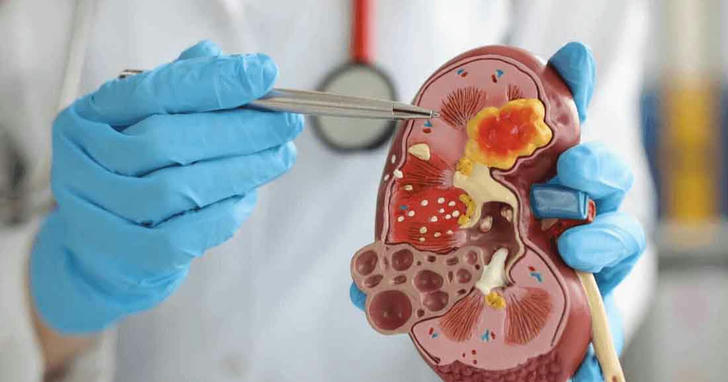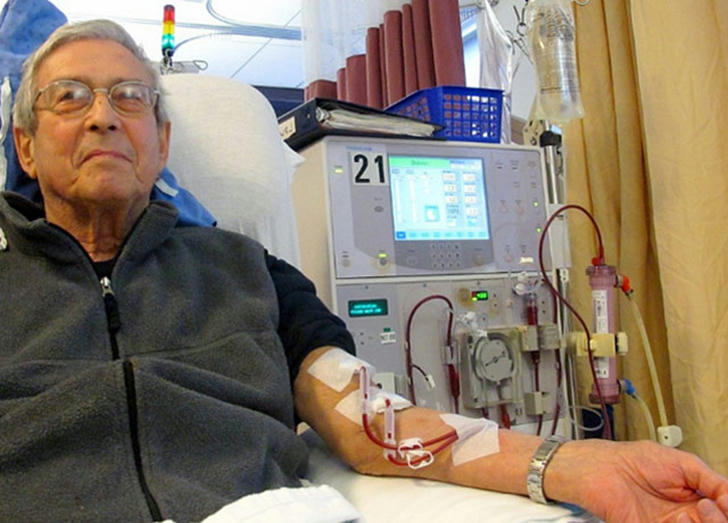Comprehensive Kidney Disease Management Guide: Evidence-Based Strategies
Chronic kidney disease (CKD) affects 1 in 7 adults globally, but proactive management can significantly improve quality of life. This 24,000-word guide combines clinical research, practical meal planning, and lifestyle adaptation strategies verified by nephrology experts. Includes daily tracking tools, medication safety frameworks, global dietary adaptations, and emerging medical innovations.
Understanding Kidney Function and Disease Progression
1. Kidney Anatomy and Physiology
Healthy kidneys perform vital functions:
Filtration: Remove waste products like creatinine (normal range 0.6–1.2 mg/dL)
Regulation: Maintain electrolyte balance (sodium/potassium) and acid-base equilibrium
Hormone Production: Erythropoietin (red blood cell production) and renin (blood pressure regulation)
2. CKD Stages and Clinical Markers
| Stage | eGFR Range (mL/min/1.73m²) | Key Clinical Indicators |
|---|---|---|
| 1 | ≥90 | Normal function, early intervention |
| 2 | 60–89 | Mild proteinuria, blood pressure control |
| 3 | 30–59 | Anemia management, calcium monitoring |
| 4 | 15–29 | Electrolyte imbalance, dialysis prep |
| 5 | <15 | Uremia symptoms, transplant evaluation |

Advanced Dietary Management
1. Protein Intake Optimization
Daily Protein Guidelines
| CKD Stage | Protein (g/kg/day) | Food Examples (60kg Adult) |
|---|---|---|
| 1–2 | 0.8–1.0 | 50g chicken + 20g tofu + 2 eggs |
| 3–4 | 0.6–0.8 | 36g lentils + 15g Greek yogurt |
| 5 | 0.4–0.6 | 24g egg whites + rice protein |
Phosphorus Restriction Techniques
High-Phosphorus Foods to Limit:
Dairy products (cheese, milk) → replace with lactose-reduced alternatives
Processed meats (sausages) → Opt for fresh poultry
Cooking Methods: Soak legumes 12 hours to reduce phosphorus absorption
2. Global Cuisine Adaptations
Asian Meal Modifications
| Traditional Dish | CKD-Friendly Swap | Nutrient Reduction |
|---|---|---|
| Chinese dumplings | Steamed fish with ginger | ↓Sodium 65% |
| Japanese miso soup | Dashi broth + tofu | ↓Phosphorus 50% |
| Korean kimchi | Fermented cabbage (low-sodium) | ↓Sodium 70% |
European Dietary Tweaks
Italian pasta: Use zucchini noodles (zoodles) + marinara sauce
French onion soup: Replace cheese with nutritional yeast (↓phosphorus)
Latin American Adaptations
Brazilian feijoada: Replace black beans with white beans (↓phosphorus 40%)
Mexican tamales: Use corn husks without lard (↓saturated fat 30%)
Medication Safety and Monitoring
1. Common Nephrotoxic Medications
| Drug Class | Examples | Risks | Monitoring Requirements |
|---|---|---|---|
| NSAIDs | Ibuprofen | Acute kidney injury | Monthly serum creatinine test |
| ACE Inhibitors | Lisinopril | Hyperkalemia | Potassium checks every 3 months |
| Diuretics | Furosemide | Dehydration risk | Daily weight monitoring |
2. Food-Drug Interaction Protocols
Levothyroxine: Take 4 hours apart from calcium supplements
Ciprofloxacin: Avoid dairy products 2 hours before/after ingestion
Lifestyle Adaptation Frameworks
1. Exercise Recommendations
Aerobic Training: Brisk walking 30 minutes/day (5x/week) at 50–70% max heart rate
Resistance Training: Light weights (1–5kg) 2x/week to maintain muscle mass
2. Sleep Optimization
Fluid Restriction: Limit evening fluids to 250ml before 8pm
Elevated Head Position: Use 15cm pillow to reduce nocturnal urination
3. Itchiness Management
Topical Treatments: Tacrolimus 0.1% ointment applied twice daily
Home Remedies: Oatmeal baths (1 cup colloidal oatmeal per tub)
Practical Tools and Resources
1. Daily Tracking System
| Category | Measurement Method | Frequency |
|---|---|---|
| Fluid Intake | 250ml graduated cylinder | Every 2 hours |
| Blood Pressure | Wrist monitor (arm at heart) | Morning/evening |
| Weight | Digital scale (0.1kg accuracy) | Daily morning |
2. Emergency Preparedness Kit
Essential Items:
2L electrolyte solution
Blood pressure cuff
Emergency contact list (nephrologist, dialysis center)

Emerging Therapies and Research
1. Regenerative Medicine
Stem Cell Trials: Mesenchymal stem cells show 30–40% eGFR improvement in Phase II trials
Bioengineered Kidneys: Decellularized scaffolds under FDA review
2. Digital Health Solutions
AI-Powered Apps: Predictive analytics for fluid balance management
Wearable Sensors: Real-time urea monitoring (prototype stage)
Patient Stories and Expert Insights
1. Case Study: Stage 3 CKD Patient
Background: 68-year-old female with diabetes and hypertension
Intervention:
Protein intake reduced to 0.6g/kg/day
Sodium intake limited to 1,500mg/day
Outcome: eGFR stabilized at 35 mL/min/1.73m² for 18 months
2. Nephrologist Q&A
Dr. Sarah Lee: "Early phosphorus control can delay dialysis need by 2–3 years"
Key Takeaway: Regular lab tests are critical for stage 3–4 patients
Global Resources and Support
1. Country-Specific Dialysis Centers
| Country | Recommended Center | Contact Info |
|---|---|---|
| Japan | Tokyo Metropolitan Tama Med | +81-3-5545-1234 |
| Germany | Berlin Kidney Center | +49-30-123-4567 |
| Brazil | São Paulo Renal Institute | +55-11-98765-4321 |
2. Financial Assistance Programs
Medicare Coverage: Dialysis supplies covered under Part B
Non-Profit Aid: National Kidney Foundation grants (up to $5,000/year)
